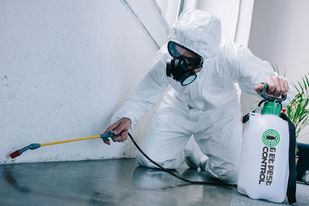Cockroaches are one of the oldest insects on the planet. They are not only a nuisance but are the carriers of various allergens and pathogens. They are considered dangerous due to the various diseases they transmit. In this article, we will learn about cockroaches, their behaviors, the types of diseases they spread, and tips to prevent and control them.
Behavior and Habits
Before understanding the types of diseases cockroaches can transmit, let us try to know about their behavior and habits.
Most cockroaches are nocturnal, meaning they are active only at night. They are omnivores and can eat all kinds of organic material, from food to decaying plant material to dead insects. Cockroaches are also highly adaptive which means they can survive in almost any environment, from the tropical rainforest to urban areas.
There are three main ways that cockroaches can spread diseases to humans:
1. The cockroach picks up pathogens on its body as it searches for food in unclean environments. When it comes into contact with these pathogens, they can spread to food and other surfaces.
2. The cockroach’s feces contain harmful microorganisms, which can contaminate foods and surfaces.
3. Cockroaches throw up digestive fluid to break down their food externally, which can also spread pathogens.
Diseases Associated with Cockroaches
Intestinal Diseases
The bacteria that cockroaches carry can be harmful. When they get into your food or on your kitchen counter, they can spread germs that can cause illnesses such as salmonella and other infections caused by the bacteria. The most common disease that a cockroach can spread is gastrointestinal disease, which can cause vomiting, diarrhea, and fever. Cockroaches have not been directly linked to any specific diseases, but they have been linked to diseases such as dysentery and cholera. They have also been also associated with typhoid fever and poliomyelitis. Sometimes a cockroach carries parasitic worm larvae that can move into your body. People who have intestinal worms experience severe symptoms such as diarrhea, vomiting abdominal cramping, and fatigue.
Allergies
Cockroaches cause allergies and respiratory problems through allergens which can be found in their droppings, feces, and body fluids. These are one of the most common causes of allergies and can worsen asthma symptoms in sensitive people. When these proteins become airborne, they can be inhaled or come into contact with the skin, leading to various allergic symptoms. If your home is infested with cockroaches, you may develop allergy symptoms such as sneezing, coughing, wheezing, nausea, fever, muscle or joint pain. Allergic reactions may also manifest as digestive tract issues such as diarrhea and vomiting.
Preventive Measures
Maintain Cleanliness
A clean home is less susceptible to cockroaches. Remove any spills, food particles, or residues promptly. Wipe countertops and surfaces with disinfectants. Regularly sweep and mop the floor and vacuum the carpets and rugs frequently.
Store Food Properly
Keep food items in air-tight containers so that cockroaches cannot access them easily. Store fruits and vegetables in the refrigerator. Do not keep pet food in the open.
Dispose of Trash Regularly
Make sure to dispose of the trash regularly and use garbage bins that have lids on them. Wash the garbage bins periodically to remove any accumulated food particles.
Seal Entry Points
Inspect your home throughout and look for any holes, gaps, cracks, and crevices on your home’s walls, windows, and doors, and seal them with caulk, weatherstrippings, and other appropriate materials. Fix nets on windows and doors to prevent cockroach entry.
Fix Plumbing Issues
If you have any leaky pipes or faucets, repair them as soon as possible. Do not allow any standing sources and fix the clogged drains to ensure the free flow of water.
Declutter
Cockroaches are attracted to cluttered spaces as they get enough hiding space. Keep your living space organized and remove the things that you no longer need or use.
Clean Appliances
Pay close attention to the appliances like stove, microwave, mixer, etc. These appliances can accumulate food debris and cockroaches can get attracted to them. Make sure to clean them thoroughly.
Control Methods
Spray Insecticides
You can spray insecticides that are labeled for cockroaches in cracks, crevices, and other hiding spots. Make sure to read the instructions carefully.
Use Cockroach Baits
Place cockroach baits strategically in areas where cockroaches are likely to hide. These baits will lure and kill them.
Diatomaceous Earth
Diatomaceous earth is a natural insect repellant. You can sprinkle some diatomaceous earth in areas where cockroaches are active like below the sinks and around the drains. It damages their exoskeletons, causing dehydration and killing them.
Boric Powder
It is an effective cockroach repellant. Sprinkle some boric powder in cracks, crevices, and other hideouts of cockroaches. You can also mix some boric powder with sugar and place them in areas where cockroaches are present.
Professional Pest Control
If you are not able to get rid of cockroaches using the above tips or the infestation is severe, hire a professional pest control in Ghaziabad. They have the knowledge, experience, resources, and equipment to effectively eliminate cockroaches. They will assess the situation and accordingly implement the best treatment as per your problem.
Conclusion
Cockroaches can survive in many different environments, including human habitats. They are important scavengers in the ecosystem, but they can also be found in homes, restaurants, and food storage areas. Cockroaches can be vectors of a variety of diseases, such as foodborne illnesses and dysentery, as well as allergies. Prevention, control, pest control, and education are important steps to reduce the health risks posed by cockroaches.
As we learn more about cockroaches and how they can affect public health, it is important to stay on top of our efforts to control cockroach populations and reduce the risks associated with them. You can follow the measures outlined in this article or seek professional assistance in case of severe infestations. Doing so can help create a safer and healthier environment for us and future generations.


